Calling all photography enthusiasts!
In celebration of summer, we’re kicking off a photo contest and we’re hoping to hear from YOU! Do you have beautiful images you’d like to share with our community and the world? Do you want to showcase a visual story about climate change, the environment and community? What do you treasure about where you live? Why are YOU hopeful for the future?
Send in an image for your chance to win prizes and recognition within our member community and on the web. Prizes will include gift cards to local DC businesses. The three winners will also get the chance to guest write a blog post or take part in an interview, telling the story of their image. It’s a great way to connect with our community and share your perspective on your climate home.
Photos should feature the following:
- Environmental themes: Did you help protect our natural resources? Participate in a rally for a carbon price? Get your community involved in a solar project? Start a neighborhood garden? Lobby your legislator environmental justice? Show us how you are working on environmental issues.
- The natural beauty of the Chesapeake region: We’re lucky that DC, Virginia, and Maryland are so filled with nature! Showcase yourself with your favorite city/nature hotspot! Tell us in the description how it helps refresh yourself.
- Anything you treasure at risk from climate change: From your favorite bee to your cousin’s nephew, what do you cherish and want to protect from climate change? Show us why it is so important to act on climate change where you live.
Entering our photo contest is free and easy. Simply choose to submit via Instagram or email, following the instructions below. Email info@carbonpricedc.org with the subject line “Photo Contest” with any questions.
- Google form: http://bit.ly/photo-contest-form
- By email: Send your photo and a description with the subject line “Photo Contest Submission” to info@chesapeakeclimate.org
- Act Fast! The contest is only open until early September (date to be determined soon).
- Follow all instructions under the Rules and Guidelines below.
Winners will be announced by early September and publicized in our communications and social media throughout the rest of summer and fall. Winners will be notified by email. Make sure your email is included when you submit your entry.
Prizes will be awarded to the Grand Prize winner and three finalists. The prizes will be gift cards to local businesses who support carbon pricing and climate action. The Grand Prize is $40 to ANXO Cidery and Pintxos Bar, and the runner-up prizes will receive gift certificates ranging from $18 to $25 to other DC businesses.
*By entering the Photo Contest, you are agreeing to the rules and guidelines of the Photo Contest (below).
- To be eligible to enter, you must be 18 years or older.
- Limit five submissions per member.
- Each participant in the Photo Contest (each a “Participant”) is responsible for ensuring that he or she has the right to submit.
- Submit large, high resolution images in color or black and white.
- Only original photos taken by the person or featuring the person submitting are eligible; others will be disqualified.
- Only digital entries are eligible and must be submitted electronically. You may submit scans of slides or paper prints.
By sharing your photograph with the Chesapeake Climate Action Network (CCAN), you agree to the following:
- If the photo(s) you share with this group is of someone other than you or something not on your or public property, you have obtained permission and/or have the ability and authority to submit such photo(s) for display on CCAN’s website as described above, and you agree that the images do not infringe on any third party’s rights.
- No payment will be made to you for CCAN’s display of the photos taken of or submitted by you.
- If your photo is selected as a finalist, you hereby grant CCAN permission to display the photograph you submit along with your name in promotions of the Photo Contest on the CCAN website, other publications, Facebook updates, Twitter content, and in member emails.
- By entering the Photo Contest, participants agree to indemnify, defend and hold harmless CCAN, its respective subsidiaries, affiliates, attorneys, agents and representatives, from any and all third party liability for any injuries, loss, claim, action, demand or damage of any kind arising from or in connection with the competition (collectively, “Losses”), including without limitation any third party claim for copyright infringement or a violation of an individual’s right to privacy and/or publicity right. The Photo Contest is void where prohibited by law.
- CCAN is not responsible for any incorrect or inaccurate information, whether caused by website users or by any equipment or programming associated with or utilized in the photo competition, or by any technical or human error that may occur in the processing of submissions to the photo competition, including but not limited to any misprints or typographical errors. CCAN assumes no responsibility for any error, omission, interruption, deletion, defect, delay in operation or transmission, communications line failure, theft or destruction or unauthorized access to, or alteration of, entries. CCAN is not responsible for any problems or technical malfunction of any telephone network or lines, computer equipment, servers, providers, computer on-line systems, software, or failure of email on account of technical problems or traffic congestion on the Internet or at any website, including injury or damage to participant’s or to any other person’s computer related to or resulting from participating or uploading images or information in the photo contest.
- If, for any reason, the photo competition is not capable of completion as planned, including but not limited to, any reason of infection by computer virus, bugs, tampering, unauthorized intervention, fraud, technical failures or any other causes beyond the control of CCAN that corrupt or affect the administration, security, fairness, integrity or proper conduct of the photo competition, CCAN reserves the right at their sole discretion to cancel, terminate, modify or suspend the photo competition.
Photo at the top by Alexa Gaul on Unsplash
Alexa Gaul


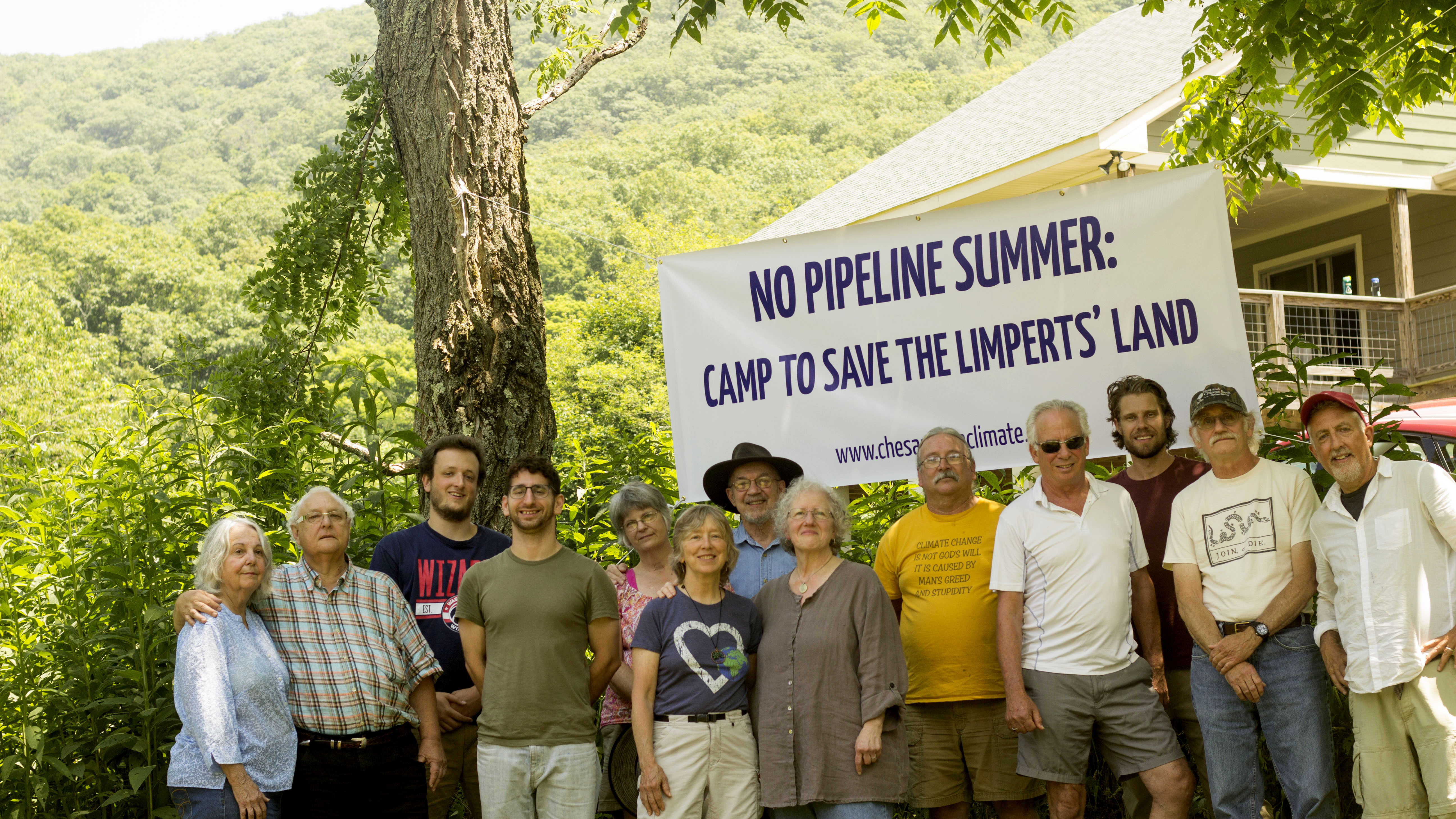
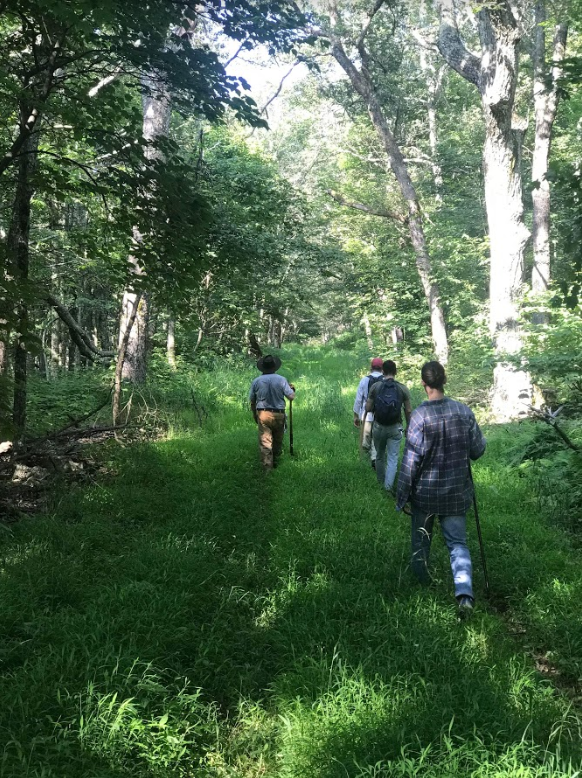



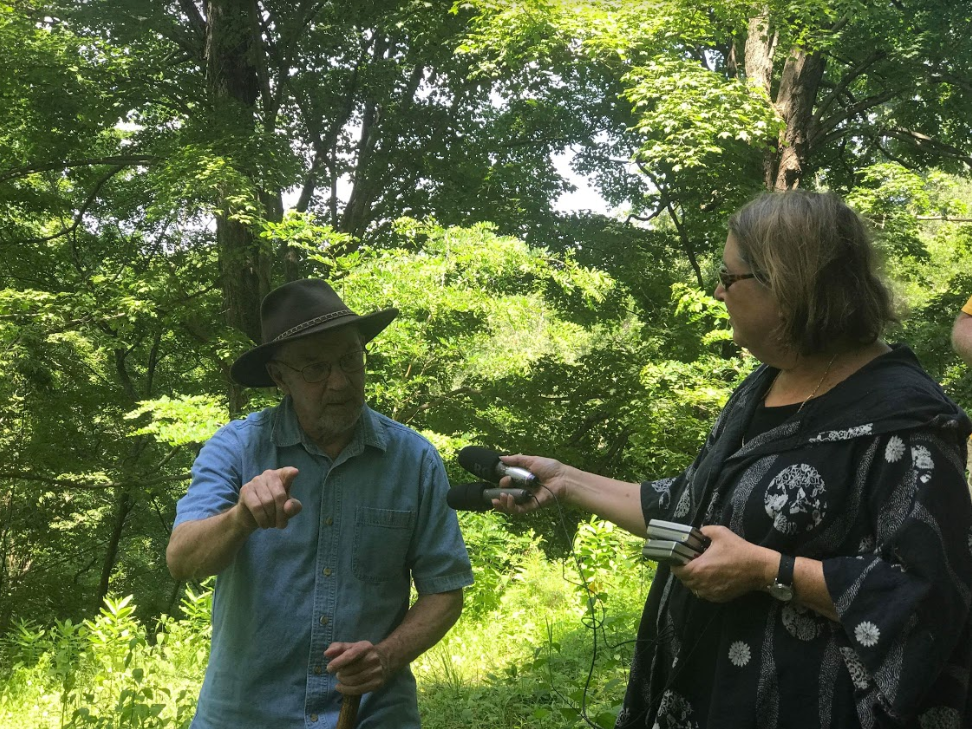


 their property.
their property. And what a disturbance this would be. Clearcutting an area 125 feet wide and blasting that would reduce this fragile area to rubble.
And what a disturbance this would be. Clearcutting an area 125 feet wide and blasting that would reduce this fragile area to rubble.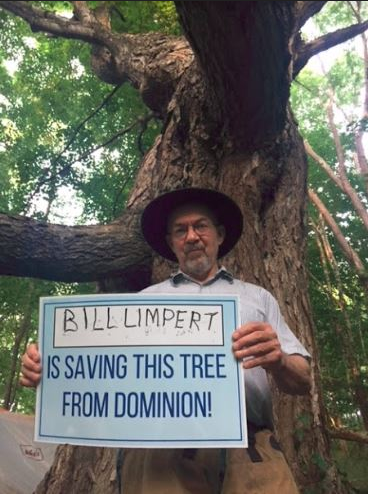

 environmental science, economics, law, and politics and share it with others.
environmental science, economics, law, and politics and share it with others.
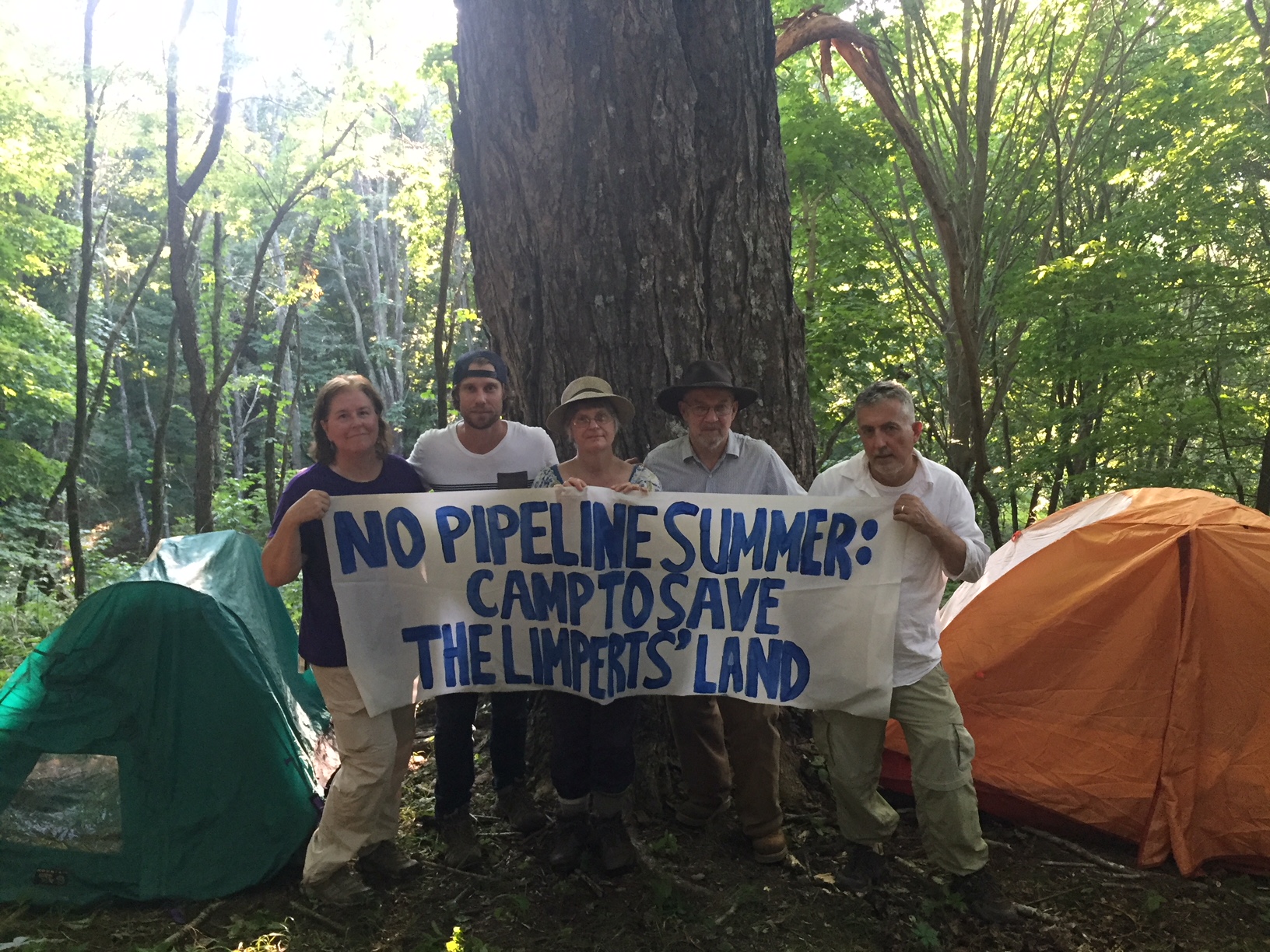




 more than a dozen Virginia Delegates and Senators to hold a press conference in Richmond to denounce the Atlantic Coast and Mountain Valley Pipelines. In May, she organized one of the most energetic Dominion shareholder protests in recent memory, getting landowners, elected officials, faith leaders, and even the famed tree-sitter Red Terry herself to come and speak to the impassioned crowd.
With her no-quit and high-spirited attitude she has continued to work for the people and climate in Virginia well into our present moment. Although there is still much work to be done, this Richmond-based climate warrior is not going anywhere. In fact it is precisely because of people like her that Virginia is becoming more and more connected in the struggle for our future. Read on to meet Lee Williams!
more than a dozen Virginia Delegates and Senators to hold a press conference in Richmond to denounce the Atlantic Coast and Mountain Valley Pipelines. In May, she organized one of the most energetic Dominion shareholder protests in recent memory, getting landowners, elected officials, faith leaders, and even the famed tree-sitter Red Terry herself to come and speak to the impassioned crowd.
With her no-quit and high-spirited attitude she has continued to work for the people and climate in Virginia well into our present moment. Although there is still much work to be done, this Richmond-based climate warrior is not going anywhere. In fact it is precisely because of people like her that Virginia is becoming more and more connected in the struggle for our future. Read on to meet Lee Williams!
 Your age: 53
Where you live: Richmond, Virginia
What are the impacts of climate change that hit closest to home for you?
I have family in Florida and Charleston, South Carolina and I am concerned every hurricane season for their safety. Half the year, the city of Charleston regularly faces tidal flooding, a situation that will worsen with continued sea level rise.
Why did you decide to get involved in taking action on climate?
I have been a lifelong activist and nonprofit volunteer who has focused primarily on environmental and social justice issues. Once you spend any time doing environmental work, it becomes irrefutably clear that the majority of our issues intersect with environmental justice issues. Poor populations often bear the brunt of climate impacts, living on the front lines of rising seas, catastrophic storms, and drought. Women, African Americans, and other people of color bare a disproportionate burden of climate change in the United States and across the world.
I was frustrated by the many climate deniers holding elected office and saw a need to shine light on this injustice and push for attention at the policy level to direct planning and resources where they are most needed. Investments in natural buffers, flood control measures, and climate-resilient housing are only half of the story and too reactive.
As a Nurse, I believe “an ounce of prevention, is worth a pound of cure.” I am engaged in the struggle encouraging elected officials to ACT on climate change – not just REACT with mitigation measures. We must stop building fossil fuel infrastructure immediately, and invest in clean, renewable technology.
What has inspired you most working with CCAN and/or in your community?
It’s been proven that humans are not just motivated by monetary reward or even recognition, but also by finding purpose in their work. I’m the type of person that finds energy from passionate people. In the nonprofit sector I’ve meet lots of kind, purpose-driven people with attitude that are more than teammates, they’ve become family. The folks in our Virginia coalition of environmentalists are working for a better world for everyone. You can’t find a a better group of people to work towards mutual goals with than that!
What do you like to do when you’re not advocating in your community?
I need to be outside playing! Whether paddling on our beautiful James River or running the paths of the Buttermilk Trail, I need to be surrounded by Nature to counterbalance the challenging and sometimes soul-sucking work that I do.
Who would you high five?
My mom. She showed me from a young age how to share your voice for those that have no voice, love and care for all living things and to never knowingly do harm. She was never afraid to stand up for what she believed. She died 21 years ago. I hope she’d like to high five me too!
Your age: 53
Where you live: Richmond, Virginia
What are the impacts of climate change that hit closest to home for you?
I have family in Florida and Charleston, South Carolina and I am concerned every hurricane season for their safety. Half the year, the city of Charleston regularly faces tidal flooding, a situation that will worsen with continued sea level rise.
Why did you decide to get involved in taking action on climate?
I have been a lifelong activist and nonprofit volunteer who has focused primarily on environmental and social justice issues. Once you spend any time doing environmental work, it becomes irrefutably clear that the majority of our issues intersect with environmental justice issues. Poor populations often bear the brunt of climate impacts, living on the front lines of rising seas, catastrophic storms, and drought. Women, African Americans, and other people of color bare a disproportionate burden of climate change in the United States and across the world.
I was frustrated by the many climate deniers holding elected office and saw a need to shine light on this injustice and push for attention at the policy level to direct planning and resources where they are most needed. Investments in natural buffers, flood control measures, and climate-resilient housing are only half of the story and too reactive.
As a Nurse, I believe “an ounce of prevention, is worth a pound of cure.” I am engaged in the struggle encouraging elected officials to ACT on climate change – not just REACT with mitigation measures. We must stop building fossil fuel infrastructure immediately, and invest in clean, renewable technology.
What has inspired you most working with CCAN and/or in your community?
It’s been proven that humans are not just motivated by monetary reward or even recognition, but also by finding purpose in their work. I’m the type of person that finds energy from passionate people. In the nonprofit sector I’ve meet lots of kind, purpose-driven people with attitude that are more than teammates, they’ve become family. The folks in our Virginia coalition of environmentalists are working for a better world for everyone. You can’t find a a better group of people to work towards mutual goals with than that!
What do you like to do when you’re not advocating in your community?
I need to be outside playing! Whether paddling on our beautiful James River or running the paths of the Buttermilk Trail, I need to be surrounded by Nature to counterbalance the challenging and sometimes soul-sucking work that I do.
Who would you high five?
My mom. She showed me from a young age how to share your voice for those that have no voice, love and care for all living things and to never knowingly do harm. She was never afraid to stand up for what she believed. She died 21 years ago. I hope she’d like to high five me too!




















